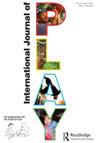Time, culture, and mass play
IF 1.2
Q3 EDUCATION & EDUCATIONAL RESEARCH
引用次数: 0
Abstract
ABSTRACT Playing masses interact and communicate in an uncertain and topsy-turvy behavioral environment freed, curbed, and evaluated by cultural norms. Through collective effort, this issue has been studied in depth (e.g., Huizinga, 1938, [1949]; Bakhtin, 1984; Sutton-Smith, 2008). The play of the masses is usually considered an escape toward a pleasurable 'there', in which a person in a crowd becomes not him/herself for a while. However, when play is ritualized, linked to the sacral and fixed in the cultural tradition of socio-cultural interactions of the masses, it exhibits properties that have not yet been analyzed in depth. Specifically, I suggest that, despite the tendency to see play as a search for pleasurable escape from routine, the further back one regresses in history, the less mass play is connected with joy and entertainment and the more it is linked to elements of the unsettling and suspenseful sacral experience of identity and deep dramatic catharsis. This ‘serious’ aspect of mass play can also be seen in contemporary sports fandom which, in specific contexts, can be interpreted as a special and even 'sacral' kind of play.时间、文化和大众游戏
游戏大众在一个不确定的、颠倒的行为环境中进行互动和交流,这种行为环境被文化规范释放、约束和评价。通过集体努力,这一问题得到了深入的研究(例如,Huizinga, 1938, [1949];巴赫金,1984;Sutton-Smith, 2008)。大众的游戏通常被认为是一种向愉悦的“那里”的逃避,在那里,人群中的一个人在一段时间内变得不是他/她自己。然而,当游戏被仪式化,与神圣联系在一起,并固定在大众社会文化互动的文化传统中时,它所表现出的特性尚未得到深入分析。具体来说,我认为,尽管人们倾向于将游戏视为一种从日常生活中寻求快乐的方式,但历史越倒退,大众游戏与快乐和娱乐的联系就越少,它与身份和深刻戏剧宣泄的令人不安和悬念的神圣体验的元素联系得越多。这种大众游戏的“严肃”方面也可以在当代体育迷中看到,在特定的背景下,可以被解释为一种特殊的,甚至是“神圣的”游戏。
本文章由计算机程序翻译,如有差异,请以英文原文为准。
求助全文
约1分钟内获得全文
求助全文
来源期刊

International Journal of Play
Social Sciences-Cultural Studies
CiteScore
1.90
自引率
20.00%
发文量
60
期刊介绍:
The International Journal of Play is an inter-disciplinary publication focusing on all facets of play. It aims to provide an international forum for mono- and multi-disciplinary papers and scholarly debate on all aspects of play theory, policy and practice from across the globe and across the lifespan, and in all kinds of cultural settings, institutions and communities. The journal will be of interest to anthropologists, educationalists, folklorists, historians, linguists, philosophers, playworkers, psychologists, sociologists, therapists and zoologists.
 求助内容:
求助内容: 应助结果提醒方式:
应助结果提醒方式:


